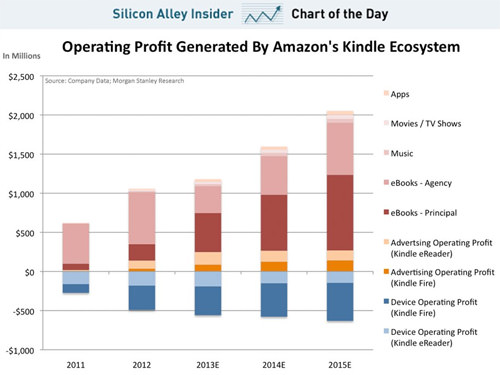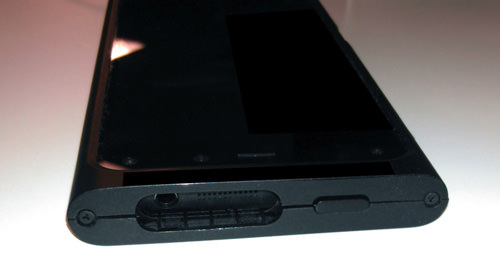Challenges Amazon Faces in Launching Its First Smartphone
Note: This post was first published on the Jun 16, 2014.
If the rumors are true, Amazon is set to unveil its very first smartphone on June 18. This device is expected to feature a head-tracking system powered by four front-mounted infrared cameras. These cameras will not only enhance 3D effects but will also enable gestures like screen switching and contextual menus.
There has been considerable excitement around the smartphone, primarily due to these 3D capabilities. For instance, Amazon shares rose 5.4% following the announcement, indicating strong market interest.
However, before getting too excited, it’s important to consider the challenges Amazon may face in positioning its flagship smartphone in an already saturated market.
Lackluster Phone Specifications
With the launch date fast approaching, details about Amazon’s debut smartphone remain scarce. A report from Boy Genius Report in April suggested that Amazon might launch two smartphones: one aimed at entry-level users and another with higher specifications. The higher-end model is rumored to feature a Qualcomm Snapdragon processor with 2GB of RAM and a 720p, 4.7-inch screen. However, little else is known.

The leaked specifications are not particularly impressive, especially considering that even the higher-end variant seems to target the mid-lower end of the market. The choice of a 720p resolution could be a drawback, as higher pixel density with a 1080p display would better support media consumption, which Amazon likely aims to promote through its device.
While the phone does offer some unique features, such as Prime Data and head tracking (more on these later), the overall specifications suggest that it may not command a high price point.
A Low-Pricing Strategy
Amazon is known for pricing its mobile devices competitively. For instance, the 7-inch Kindle Fire HDX is priced at less than half the cost of an iPad Mini with Retina, yet offers a similar pixel density – 323 PPI for the Kindle compared to 326 for the iPad Mini.
There is little reason to believe that Amazon’s smartphone will deviate from this trend. Amazon’s business model relies on locking users into its ecosystem, limiting access to the Google Play Store and other Google services. This approach allows Amazon to sell its devices at a lower price, recouping profits through increased sales of products and services.
According to Business Insider, Kindle users spend, on average, $443 more annually than non-Kindle Amazon users: $1,233 per year compared to $790 per year. This difference suggests that the low profit margins on devices are offset by higher overall spending. Kindle-related profits are estimated at $565 million. Imagine the potential increase in spending if users have a pocket-sized Amazon device with them at all times.

…But This Strategy Faces Challenges
While Amazon’s pricing strategy has worked well for the Kindle Fire, it may face challenges with its smartphone. In the US, most consumers do not pay full price for smartphones; they purchase them on contract.
Furthermore, Amazon’s smartphone will face stiff competition from lower-priced devices like the Moto G, Moto E, and Nokia X, all of which have already established themselves in the market. As a result, the Amazon smartphone cannot rely solely on price. It will need a compelling combination of price, specifications, and features.
Are These Features Necessary?
The most talked-about feature of Amazon’s smartphone is its head-tracking capability, enabled by four infrared cameras on the front of the device. This technology is expected to support 3D effects and gesture-based navigation. Additionally, the phone may include a tilt-to-control interface, allowing users to navigate by tilting the device.
However, until the phone is officially released, most of this information remains speculative. It’s unclear how these features will fit into the daily habits of smartphone users.
What seems more promising is a special wireless data plan that will be offered with the smartphone. Known as Prime Data, this plan will function as a Sponsored Data service. Essentially, when you use Prime Data to consume Amazon content, the data usage will not count against your monthly cap. The downside is that the smartphone may be exclusive to AT&T.
This means that you can stream full albums or movies purchased from Amazon without worrying about exceeding your data limit. For avid media consumers and dedicated Amazon users, this feature could be highly appealing.

Overall, Prime Data is likely to have a greater impact than the head-tracking feature in persuading consumers to choose Amazon’s smartphone over other options. However, this will mainly benefit users who are already invested in Amazon’s ecosystem.
Challenges in Emerging Markets
For Amazon’s smartphone to be successful, it will need to gain traction outside the US, which presents its own set of challenges. Android dominates in emerging markets, making it difficult for Amazon to compete.
For example, the Prime Data feature, which is the smartphone’s most compelling selling point, may not be as effective outside the United States.
Telecommunication systems vary across countries, and Amazon may struggle to negotiate Prime Data deals with service providers in other regions. This could undermine Amazon’s strategy of building a locked-in ecosystem. Additionally, slower and less reliable mobile Internet connections in emerging markets could hinder users’ ability to consume Amazon’s media content.

One advantage of the Fire OS being based on Android is that it will be relatively easy to root, allowing users to escape Amazon’s locked-in ecosystem. However, the Amazon smartphone will still struggle to compete with other low-cost Android devices already available in these markets, which do not require rooting to access the Google Play Store.
Another factor to consider is the influence of peer pressure in smartphone ownership. Consumers will want to use the same devices as their friends and family. If everyone around them is using Android devices – especially in such a crowded market – Amazon’s smartphone may struggle to gain a foothold.
Final Thoughts
Many non-Amazon users are drawn to Kindle Fire tablets because, in addition to their low prices and decent hardware, they are relatively easy to unlock and install a “pure” Android OS. This will likely be possible with the Amazon smartphone as well, but doing so would disable features like head-tracking and other unique functionalities.
It’s possible that Amazon could surprise us with additional features or competitive pricing when the smartphone is officially launched. These factors could determine whether the device becomes a calculated success that establishes Amazon in the smartphone market or remains a niche product appealing mainly to Amazon enthusiasts.